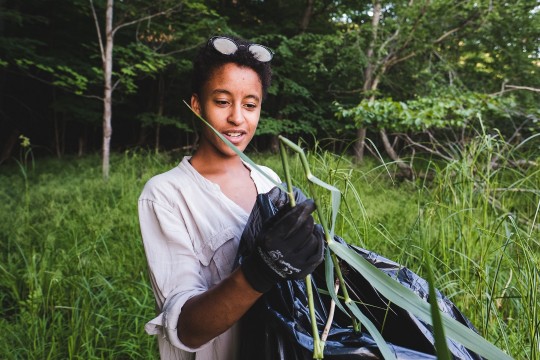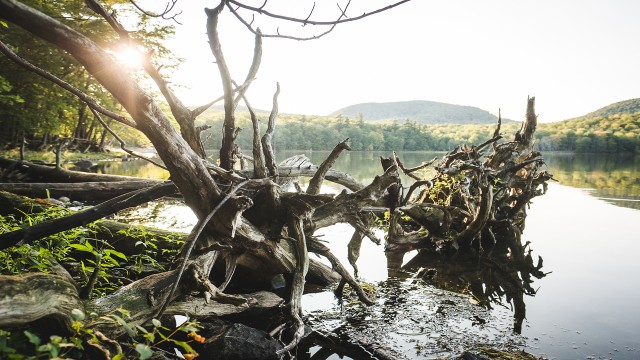The invasive common reed (Phragmites australis), or European common reed, is an invasive plant originating from Eurasia that has extended its roots across North America since its introduction in the early 20th century. It may be familiar to you as tall grasses that often grow along roads. While the native species of common reed (Phragmites americanus) is an important component of a healthy wetland, its invasive relative can be devastating to local ecosystems. It is estimated that up to 95% of common reeds in Quebec are invasive.
While completely eradicating the invasive common reed once it is established is very difficult, we can help prevent its spread and in turn facilitate the growth of native species. Reed-filled areas can be “reclaimed” through proper de-rooting of dense growth, which helps the ecosystem to rebound. Repetition of these control methods year after year is the key to success. One of our tasks, as interns, is to de-root phragmites surrounding lake Hertel and other areas of the Gault Nature Reserve. The results from such efforts are visible at the Welcome Center.
Last summer, the nearby pond was completely cleared of the reed that had taken over, and this year we were lucky enough to find duckweeds (Lemnoideae family) returning. These tiny, bright green plants, which can be seen floating on the surface of the pond, have many beneficial ecological properties.
Invasive common reeds love to grow near water (e.g., wetlands, shorelines, drainage ditches) in very dense patches. You may be wondering how they can be detrimental to our wetlands if we have a closely related native species. As with most invasive species, local habitats are simply not equipped to accommodate the invasive common reed because they have not evolved together. It thus easily outcompetes other plants in the area, leaving them with insufficient nutrients. As the reed grows, it smothers and displaces nearby vegetation, reducing both the abundance and diversity of native plants. This, in turn, degrades habitat for the fish and other wildlife that rely on these plants for shelter and food. The invasive common reed also requires a large volume of water to grow, which can lower water levels in its vicinity. These lower water levels coupled with how dense reedbeds are, can impede animal travel and can even prevent wetland wildlife, such as turtles, from finding suitable nesting sites.
If you have a patch of invasive common reeds on your property that you would like to remove, please refer to this guide (Available in French only) prepared by the city of Quebec in association with the PHRAGMITES research group.
Juliano Malizia & Savannah Bissegger-O’Connor Field Operations Assistant Interns at Gault Nature Reserve Biology Department, McGill University
Header : Myrah Graham, intern in 2018, removes invasive phragmites from the shore of Lac Hertel (photo: Alex Tran)

